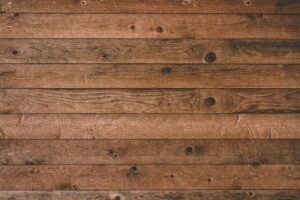How to Save Wood After Water Damage
 Water damage is sometimes unavoidable in houses, mainly if it results from natural disasters or phenomena. In addition to the general inconvenience water damage causes, its impact on wooden flooring and furniture is the worst.
Water damage is sometimes unavoidable in houses, mainly if it results from natural disasters or phenomena. In addition to the general inconvenience water damage causes, its impact on wooden flooring and furniture is the worst.
Wood has natural water-absorbing qualities and is quick to absorb moisture when surrounded by floodwater, damp flooring, etc. However, there are ways to salvage the situation if you discover the damage and act quickly.
What Water Damage Does to Wood
Water damage affects woods differently depending on their type. Here’s how it affects the two main types of woods used in households.
Hardwood
Hardwood furniture or flooring show apparent signs of water damage through discoloration and staining. In case you are using hardwood flooring, the planks will swell and lift themselves above ground.
Plywood
Plywood is a set of wooden slabs joined together rather than a whole chunk, and it is used for making walls and furniture. Therefore, it is a little challenging to get water damage to affect plywood, and the difficulty will buy you some time.
How to Save Wood after Water Damage
Let’s now explore ways to save wood after water damage to ensure you don’t have to throw everything away.
1. Remove Residue Water
Firstly, remove any residual water that is remaining on the wood. Take a wiper and cloth and clear away as much as you can. When you are done with this step, there should be no external water on the wooden furniture.
2. Dry the Wood Thoroughly
Even after you have dried the wood externally, you will notice a few damp patches on it or some swelling. These patches have absorbed water inside that needs drying out before it renders the wood useless.
You can use hair dryers or blowers for this purpose, but do not try drying it too quickly. Sudden changes can weaken the wood and make the object snap in a few days.
3. Look For Molding
The last thing you want is for mold to appear on your wooden furniture and destroy it from inside and out. Carefully look for signs of molding and mark areas where you find traces. If you discover the water damage soon after it started and act on it quickly, the mold formation and infestation will not be too advanced.
4. Clean Using Mild Detergent
Once all the moldy areas are marked, take a mild detergent, mix it with water, and spray the solution over the moldy areas. Then take a scrub and gently scrub the sprayed solution to disinfect the affected parts.
Please note that this step is only recommended if the water damage and exposure were for under two days and mild mold formation. If either condition doesn’t hold, call 911 Restoration of Downriver at (734) 239-7803. Our team will reach you within 45 minutes of the call.
5. Sand the Damp Areas
If you notice swelling on parts of your furniture, those areas absorbed water, making them look bloated. Sand is an excellent natural absorbent, and you can collect it from nearby to start the process.
The changes from this step will take some time, but that doesn’t mean it is unsuccessful.
6. Clean Again for Results
Finally, give the furniture another thorough cleaning to eliminate all excess moisture and sand around it. Once that is done, leave it out and give it time to return to its original state.
Signs Your Wooden Furniture is Beyond Saving
While these steps will help you recover your furniture instead of throwing it away as trash, there are some scenarios where the wood might no longer be safe to keep around the house in any capacity.
1. It Has Been in Water for Over 48 hours.
Most wooden objects can remain in the water for two days before the damage renders them useless. If the furniture you are trying to save meets these criteria, it might already be too late. Water breeds infections, and staying in water for longer than this can make the wood absorb them.
2. The Swollen Areas are Not Turning Normal
If you have been relentlessly trying to sand and dry the swollen areas to no avail, the damage to furniture might not get back to normal. The situation is likely unpleasant, especially if this wooden furniture has emotional value. However, if the damage doesn’t go away, you should consider replacing it.
3. There is a Possibility of Biohazard Contamination
Finally, if the water damage in your area has also created alarms for biohazard contamination, you will need to abandon your furniture. Biohazard contaminations are considered a public risk, and since wood can absorb the water and the infections it is spreading, the wooden furniture is unsafe.
Final Thoughts
There are several ways in which you can save yourself from losing out on excellent furniture. Unless your case falls under any of the three signs mentioned at the end, you have a good chance.
If you want professional help to remove water damage to your home and furniture, call us at (734) 239-7803 or send your queries to this link.



